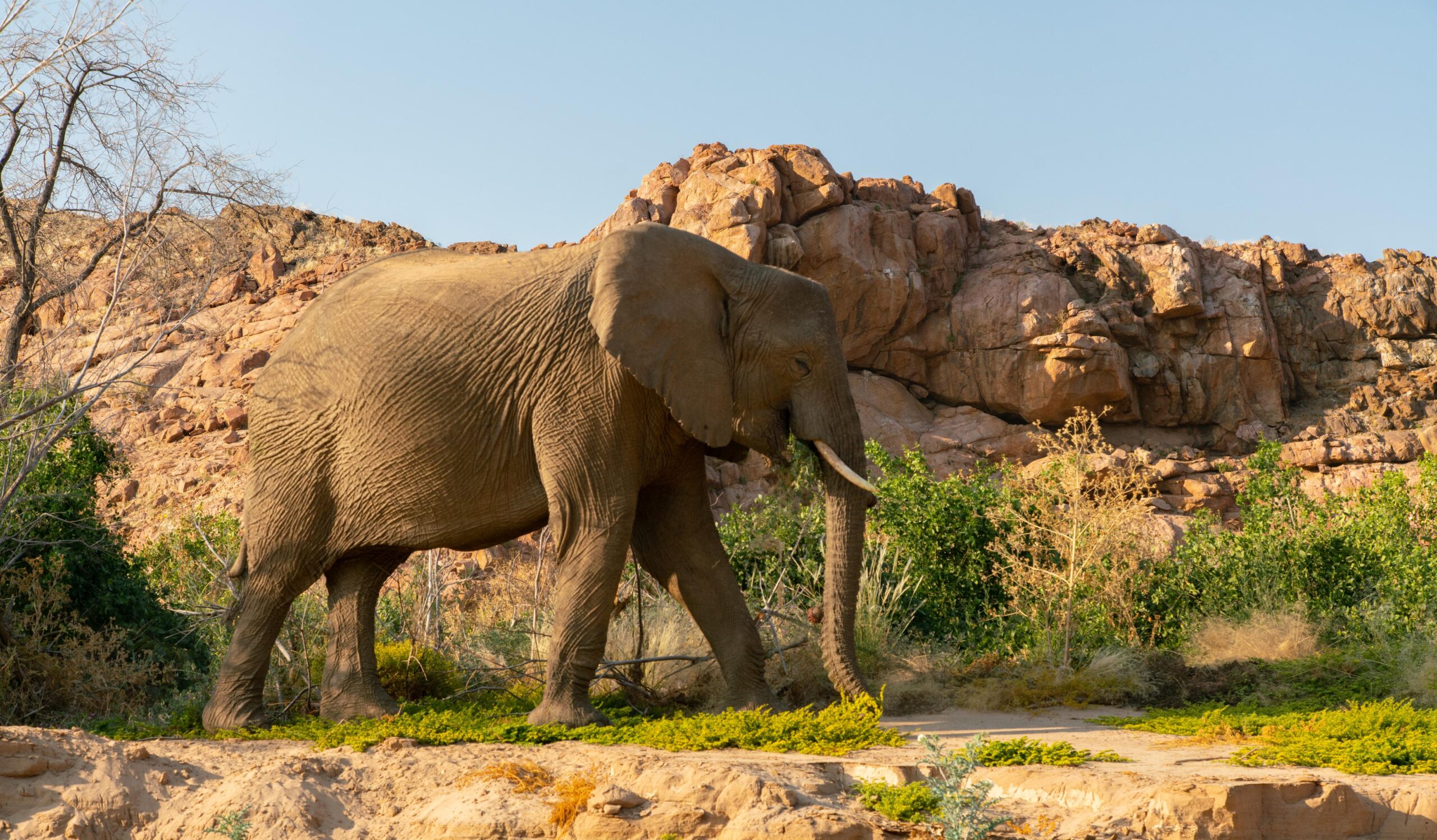
Namibia is home to a remarkable population of desert elephants, uniquely adapted to the harsh conditions of the Namib Desert. These elephants, unlike their savannah counterparts, have evolved to survive in one of the most arid environments on the planet, showcasing extraordinary resilience and adaptability.
The Namib Desert, known for its vast expanses of sand dunes and minimal rainfall, presents a challenging habitat for any wildlife. However, the desert elephants have developed several adaptations that enable them to thrive in this unforgiving landscape. One of the most notable adaptations is their ability to travel long distances in search of food and water. These elephants have larger home ranges compared to typical African elephants, often roaming over 70 kilometers (about 43 miles) in a day.
Another remarkable trait of the Namib Desert elephants is their ability to go without water for several days. They have become adept at locating underground water sources and have been observed digging wells in dry riverbeds to access hidden water reserves. This skill is critical for their survival, given the scarce and sporadic rainfall in the desert.
In addition to their physical adaptations, desert elephants also exhibit unique behavioral traits. They tend to be smaller in size and have longer legs, which help them navigate the sandy terrain more efficiently. Their diet is more varied, including roots, tubers, and moisture-rich plants that are often overlooked by other herbivores.
Conservationists and researchers have been closely monitoring these desert elephants to understand better their habits and the ecological role they play in the Namib Desert. Efforts are underway to protect their habitat from human encroachment and climate change, ensuring that these magnificent creatures continue to thrive.
The Namib Desert elephants are not only a testament to the incredible adaptability of wildlife but also an important part of Namibia’s natural heritage. Their presence in the desert is a powerful reminder of the resilience of nature and the importance of conservation efforts to preserve such unique and remarkable species.
